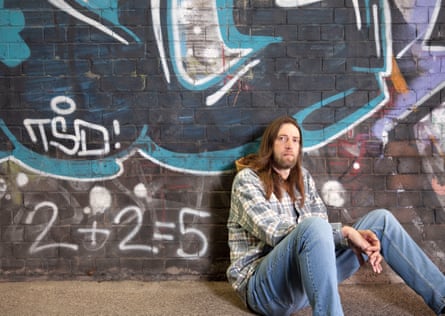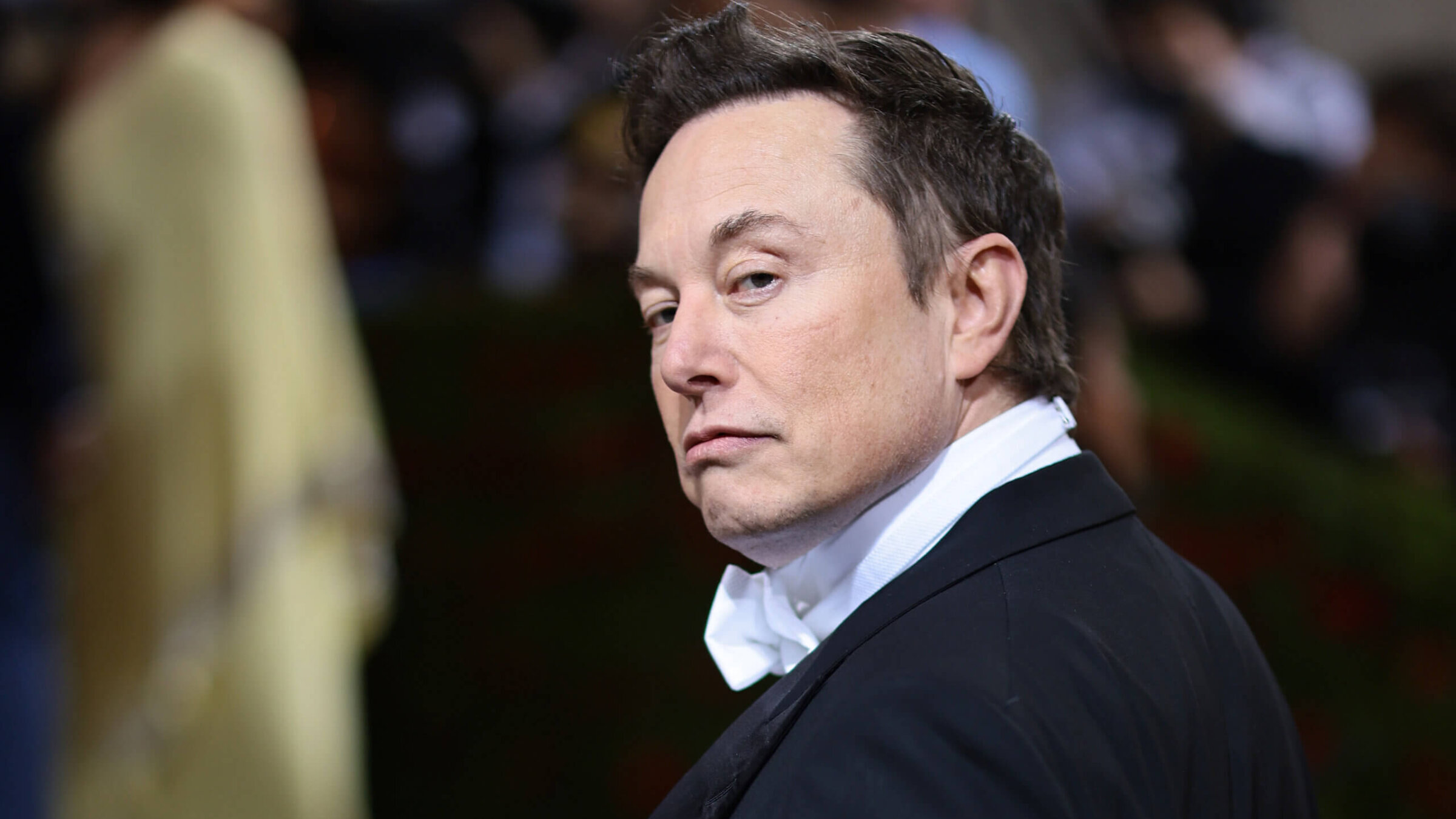All of that adolescent fooling with conspiracy went away when I actually met a conspiracy theorist in the 2000s. Working as a features editor for my college newspaper, I decided to interview the author of the odd tracts that showed up at the local record store. He seemed gracious and personable, pointing out, as I opened the door with my left hand, that I would have been considered sinister in a more superstitious age. But meeting him made his published rants about Babylonian mystery cults seem a little too real. It was one thing to listen to raconteurs spinning tales about Bigfoot on Art Bell’s radio show and another thing to see firsthand that people actually believed this stuff. Needless to say, I didn’t write the article.
I imagine that many other people have undergone similar shifts in tolerance for conspiracy theories over the past few decades. Conspiracy theories have always had a dark side, fueling right-wing violence and antisemitic hatred. But, as conspiracists organized themselves into online communities around hucksters such as Alex Jones, the shaggy dog stories about UFOs and time-traveling naval ships fell away to reveal a reactionary politics that moved from the message boards into the streets.
QAnon has been a major part of this shift. During the 2016 election, conspiracy theorists hallucinated hidden meanings into the Clinton campaign’s leaked emails, interpreting innocent references to lunch plans as evidence of a child sex-trafficking ring surrounding a popular Washington, DC, pizza parlor. When Donald Trump entered office, however, he seemed to do nothing to stop this alleged cult of Satanic pedophiles. If what came to be known as Pizzagate were true, why were its principals still walking around free? QAnon emerged to resolve this cognitive dissonance.
In 2017, an anonymous user on notorious online message board 4chan known as “Q Clearance Patriot” began posting cryptic clues suggesting he had top-secret knowledge that Trump was orchestrating a covert plan to expose and execute the nation’s enemies among the Hollywood and Democratic elite. Although these posts represented part of a long tradition of online role-playing as government agents that most 4chan users understood to be a game, QAnon proved wildly popular, spreading to other websites to become a full-fledged political movement. Popular influencers on platforms such as YouTube and Facebook positioned themselves as interpreters of QAnon’s oracular pronouncements for less tech-savvy users unfamiliar with the imageboards where one or more users claiming to be QAnon posted.
QAnon became a catch-all conspiracy theory, gathering into itself narratives that featured celebrity clones, lizard people, government superweapons, anti-vaccine ideology, and all the old antisemitic myths about a Jewish cabal that governs the world. Some QAnon-influenced candidates such as Marjorie Taylor Greene made it into office, and when the movement’s prophecy of Trump-as-savior failed, many QAnon believers were among the insurgents in the January 6th attack on the US Capitol. Gripped by a dangerous paranoia, QAnon supporters have committed murder and other acts of terrorist violence.
QAnon’s bizarreness has sometimes led commentators to approach the conspiracy theory with a derisive if not bemused attitude. Robert Guffey’s
Operation Mindfuck: QAnon and the Cult of Donald Trump emphasizes the absurdity of QAnon’s beliefs, taking them to task for what the author calls the “jabberwocky” the movement accepts as truth. Guffey sees the QAnon adherents as bad readers. They have a hard time distinguishing between fantasy and reality. When Hunter S. Thompson fictionalizes adrenochrome as a potent psychedelic that must be harvested from living human beings, the QAnon crowd not only believes him but also imagines a whole mythology surrounding the extraction and consumption of this fictive substance. Guffey argues that the right has figured out how to exploit this credulity, using media manipulation techniques modeled on Shea and Wilson’s Operation Mindfuck and similar left-libertarian pranks from the 1960s and 1970s.
Guffey has written extensively on the subject of conspiracy theory. In his 2012 book
Cryptoscatology: Conspiracy Theory as Art Form, he suggests that conspiracy theory — like comedy — provides audiences with a critical perspective via an estranged view of the world. By holding up a funhouse mirror to the authorities, conspiracy theory calls them into question. But, as Guffey observes, the QAnon conspiracy is different because it
celebrates the shadowy government agents as America’s saviors. Reactionaries used to warn that patriots were going to be rounded up and placed in FEMA camps. Now they look forward to the day when the state places their political enemies in such camps.
I would argue that we can better understand this surprising reversal if we examine how these fringe ideas tend to operate. Conspiracy theorists often worry that their government is going to do to them what it has already done to more oppressed populations. First the CIA plotted to assassinate Patrice Lumumba, they suggest, then John F. Kennedy. We see the same kind of
bizarro victimhood across a variety of conspiracy theories that flip the role of colonizer and colonized. Nick Estes
points out that the white nationalists claiming they are being replaced by nonwhite migrants are only projecting onto others the crimes that European settler-colonists already committed against Indigenous peoples. Renaud Camus — who first proposed
the Great Replacement theory — even presents distorting citations of decolonial thinkers such as Aimé Césaire and Frantz Fanon to support his argument that France is being colonized by African migrants. Even more outré conspiracies follow the same structure. British conspiracy theorist David Icke borrowed the idea of a globe-spanning empire governed by albino, shape-shifting reptiles from a self-described Zulu sangoma from South Africa. Icke, who did not seem to realize that he was the alien invader being allegorized in these fantasies, now imagines himself
tyrannized by a pale elite whose members include the British royal family.
On some level, QAnon believers seem to recognize conspiracy theories as a guilty displacement of Western imperialism, but they feel nostalgic for a time when American empire possessed such power. After decades of punishing government austerity and disastrous imperial entanglements, the QAnon contingent longs for the state capacities intimated in scary stories about unmarked helicopters and men in black. As Trump governed on a whim, sabotaging his own efforts at every turn, QAnon envisaged him as a mastermind orchestrating an invisible takeover with the hypercompetence once attributed to the Illuminati. The QAnon conspiracy theory serves as a compensatory fantasy for a nation in decline.
Guffey also seems to possess an overinflated sense of the Trump team’s capabilities. He believes that QAnon is “a massive psychological warfare operation deployed against the American people by a Trump-backed political think tank.” Guffey lacks the evidence required to prove this accusation, and his argument seems to overlook the fact that QAnon, like many internet phenomena, rather quickly escaped its author’s intentions to become memeified and massively distributed among many communities who ran with it in different directions. Nobody really controlled Q, let alone the inept Trump administration.
Mia Bloom and Sophia Moskalenko’s new book
Pastels and Pedophiles: Inside the Mind of QAnon offers a more sober and well-researched account of the movement. This is a good starting place for anyone looking for an overview of all things Q. They name 8chan operators Jim and Ron Watkins among the possible suspects for QAnon’s true identity — a claim also made by HBO’s docuseries
Q: Into the Storm — but they rightly argue that QAnon is probably many different people. Borrowing an image from terrorism expert Clint Watts, they suggest that QAnon is like the Dread Pirate Roberts from
The Princess Bride, a shared persona passed from actor to actor.
Bloom and Moskalenko are more interested in the social and political implications of QAnon than sleuthing out its true originator. The authors argue that QAnon followers have become radicalized because the social norms they believe in seem to have become unsettled or “unfrozen.” Many women, they show, turned to QAnon because their trust in social institutions has been shaken by revelations of pharmaceutical company malfeasance in the opioid crisis and high-profile cases of sexual abuse by clergy, celebrities, and politicians. They are disturbed by “shifting gender roles,” and many have experienced serious trauma. QAnon provides utility for them by allowing them to feel as if they understand the world while providing them a sense of community and the emotional satisfaction of seeing the sexual abusers finally receive justice. Bloom and Moskalenko’s examination of the gender politics of QAnon, including its special appeal for mothers struggling through COVID-19 lockdowns, is especially powerful.
When they turn to solutions for the QAnon problem, however, the book exemplifies what I consider to be a persistent limitation in anti-extremist framings of conspiracy theories and the far right. Many commentators take what might be called a cognitivist approach that casts conspiracy theories as disinformation. Stopping QAnon thus means curtailing the circulation of falsehoods spread by social-media algorithms as well as by bad state actors such as Russia, while also preparing users to distinguish good sources of information from bad ones.
All of this is true — deplatforming QAnon and the alt-right remains a high priority — but this framework begins to break down when we start to ask what counts as disinformation. If someone imagines that Nikola Tesla invented a miraculous energy source that is being hidden from the public to prop up the fossil fuel industry, we rightly consider them to be a crank. If someone believes that oil is a miraculous energy source that can be exploited forever without any serious consequences, they are welcome to appear on Fox News and publish op-eds in several major newspapers. Both viewpoints rely on bad data resulting from systematic campaigns to obfuscate the truth, but one remains within the bounds of socially acceptable discourse because it has the backing of the Republican Party. We cannot single out the extreme as irrational long after the mainstream has abandoned reason.
A better theory of QAnon must therefore give up pretensions to neutrality while inquiring into the degradation of the public sphere that made the movement seem so attractive. Timothy Melley’s 2012 book
The Covert Sphere: Secrecy, Fiction, and the National Security State helps us think about QAnon in a more productive way. Melley argues that, since the beginning of the Cold War, the National Security State has distorted public discussion by transforming many of the government’s operations into open secrets. We know that the state is carrying out covert actions, but we cannot know precisely what those might be. As a result, we find ourselves debating foreign policy in what Melley calls the covert sphere, “a cultural imaginary shaped by both institutional secrecy and public fascination with the secret work of the state.” Because it is illegal if not impossible to discover reliable information about the state’s clandestine activities, the covert sphere represents a space where fictional narratives take the place of rational-critical debate. We can only fantasize about what the covert sector is doing through media such as spy novels, stealth-based games, and television thrillers.
As Melley has argued, QAnon’s desperate search for clues about the deep state emerged as a consequence of our inability to piece together fragments of information about the secretive institutions that govern our society.
* Drawing upon the popular fictions that structure our understanding of the covert sphere, QAnon exploits the impenetrable fog of state secrecy by transforming covert operations into a media spectacle. QAnon followers tell each other to get out the popcorn so they can watch Trump’s storm finally arrive on television in a day of mass executions. They are unable to divine the true nature of what our government is doing — much less determine its actions — so they imagine all the detentions and executions as an exciting Hollywood blockbuster.
Conspiracy theories such as QAnon have become immune to fact-checking because, as Melley suggests, the covert sphere has helped inaugurate an era of postmodern skepticism in which anything seems possible. Once we know that the government can carry out propaganda campaigns, false-flag operations, and mind-control experiments, we find it increasingly hard to distinguish truth from falsity. Through readings of novels such as Don DeLillo’s
Libra (1988), he argues that this epistemological uncertainty has tipped over into an ontological crisis in which we no longer know what is real. QAnon taps into this fundamental confusion when it presents the world as a dream from which we will all soon awaken.
Jodi Dean’s
analysis of conspiracy theory also explores the unraveling of consensus reality. She diagnoses the 9/11 “truther” movement as a consequence of the decline of symbolic efficiency explored by Slavoj Žižek. The public used to be bound together by a shared understanding or common knowledge guaranteed by authorities such as professional experts and political figures. Now that we have lost trust in these authorities, however, we are left without a common ground for communication. Whereas political parties once represented opposing viewpoints, they now face each other with alternative sets of facts. The universe of discourse has splintered into many disparate microcosms, each talking in its own insular codes and obeying its own peculiar authorities. As Daniel Adleman
points out, this signification crisis manifests in QAnon as a combination of extreme distrust in the official narrative and extreme credulity in anyone claiming to speak for Q. The movement’s
attacks on media networks such as the 5G towers serve as a frightening synecdoche for this much larger communication breakdown.
QAnon can also be seen as a reflection of the crisis of “symbolic investiture” that Dean explores in her work on conspiracy theories. Pierre Bourdieu developed this notion to describe rituals such as ordinations or swearing-in ceremonies that are used to mark someone’s ascent to the symbolic power and authority that comes from holding an official position within the institutional or legal order. As these offices forfeit the dignity and respect that once commanded reflexive obedience, we begin to see that the law is grounded upon nothing more than
lawmaking and law-preserving violence. Eric L. Santner’s
brilliant study of Judge Daniel Paul Schreber shows that his well-known paranoia, which left him feeling violated by omnipotent rulers, emerged as a reaction to the obscene overproximity of invasive powers that shed their symbolic authority and resorted instead to naked coercion. Once we lose faith in our leaders after they abuse their positions, it is hard not to see their evil influence everywhere and suspect everyone of malfeasance.
QAnon steps through this break in the symbolic order. Trump’s term was surrounded by other presidents with real or perceived lacks of legitimacy. In his first term, George W. Bush was appointed by the Supreme Court rather than elected by the people. Trump helped stoke the racist “birther” campaign against Barack Obama, questioning his eligibility for office. According to Bloom and Moskalenko, QAnon dead-enders believe that Joe Biden swore his presidential oath on a Bible whose leather binding somehow invalidated his inauguration ceremony. Meanwhile, gerrymandering and voter suppression continue to erode democratic legitimacy for the presidency and other elected offices. For reasons good and bad, the public imagination sees the president as governing based on an arbitrary rule increasingly divorced from the people’s consent.
Most of this legitimation failure can be blamed on the GOP, but through QAnon’s camera obscura, we see elections stolen by the Democrats. QAnon then displaces these anxieties about the eclipse of popular sovereignty onto a “deep state” cabal. QAnon depicts members of this conspiracy travestying what Santner would call the “performative magic” of symbolic authority, conducting Satanic rites whose efficacy depends on torture inflicted upon the bodies of the powerless. Power’s ceremonial trappings come to seem diabolical once they no longer command reverence. Fittingly, all these anxieties about the collapse of symbolic identities are conveyed by an empty position that anyone might inhabit, an authority consisting only of a single symbol: Q.
Donald E. Pease
has shown how the crisis of symbolic investiture reached a breaking point with Trump. Trump seemed constitutionally unable to make the transition from private individual to public office–holder. Appearing as both the imposter and usurper that symbolic investiture protects against, he mangled his ritual performance during the inauguration ceremony, abdicated his moral duties by siding with white nationalists after the bloody 2017 Unite the Right rally in Charlottesville, and disrupted the peaceful transition of power during the final days of his term. Throughout his term, he used his presidential position for petty personal aggrandizement while abjuring any pretense of governing on behalf of the entire nation. When he wasn’t Trump the self-serving celebrity, he was
Trump the insurgent fighting on behalf of white reactionaries.
While liberals bemoaned Trump’s offenses against presidential norms, QAnon imagined that Trump could restore democracy by suspending the law. QAnon sometimes diverges into the same kind of crackpot legalism we see in the sovereign citizen movement, which believes that jurisdictional authority hinges on whether the court’s flags sport golden fringes. More often, though, QAnon is oriented toward a fantasy of excessive force without legal restraint: mass arrests, military tribunals, hangings, and guillotines. Trump is the man who they believe will refound the nation by returning it to its
moment of constituent violence in a second American Revolution. They seek a bloody solution to the crisis of symbolic investiture.
Bloom and Moskalenko are therefore essentially correct that QAnon emerged because the rules and roles that governed its members’ lives had lost meaning and certainty. But this is part of an even larger shift in politics. We no longer speak the same discourses, heed the same authorities, or recognize the same realities, and increasingly we no longer believe that these fundamental differences in worldview can be resolved through democratic deliberations or electoral contests. The ruling class’s hegemony is collapsing, giving way to forms of domination that rely primarily on state repression and the mute compulsion of economic relations. QAnon therefore must be understood not as a disinformation campaign promulgated by bad actors but instead as another morbid symptom of the capitalist system’s slide into barbarism.
¤
Jordan S. Carroll is a visiting assistant professor of English at the University of Puget Sound. His work includes Reading the Obscene: Transgressive Editors and the Class Politics of US Literature (Stanford, 2021), and his writing has appeared in such venues as American Literature, Twentieth-Century Literature, Post45, Polygon, and the Los Angeles Review of Books; he is now writing a short book about science fiction, race, and the alt-right.¤
* More of Melley's work on conspiracy theories can be found
here and
here.









/https%3A%2F%2Fdev.lareviewofbooks.org%2Fwp-content%2Fuploads%2F2022%2F12%2FOperation-Mindfuck.jpg)
/https%3A%2F%2Fdev.lareviewofbooks.org%2Fwp-content%2Fuploads%2F2022%2F12%2FPastels-and-Pedo.jpeg)